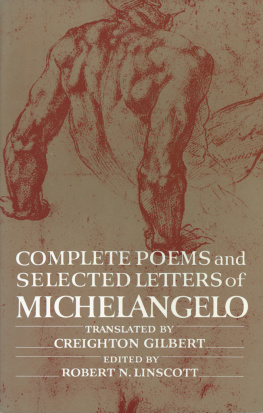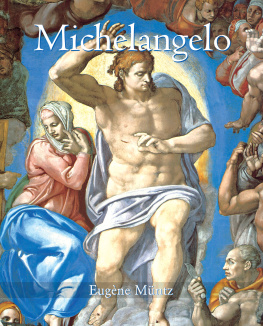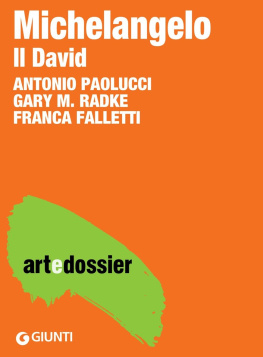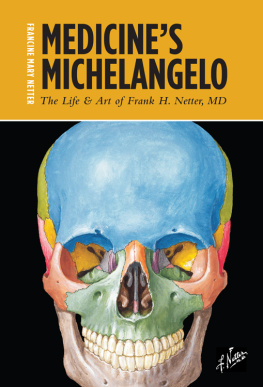Antonioni Michelangelo - Michelangelo red Antonioni blue: eight reflections on cinema
Here you can read online Antonioni Michelangelo - Michelangelo red Antonioni blue: eight reflections on cinema full text of the book (entire story) in english for free. Download pdf and epub, get meaning, cover and reviews about this ebook. City: Berkeley, year: 2011, publisher: University of California Press, genre: Art. Description of the work, (preface) as well as reviews are available. Best literature library LitArk.com created for fans of good reading and offers a wide selection of genres:
Romance novel
Science fiction
Adventure
Detective
Science
History
Home and family
Prose
Art
Politics
Computer
Non-fiction
Religion
Business
Children
Humor
Choose a favorite category and find really read worthwhile books. Enjoy immersion in the world of imagination, feel the emotions of the characters or learn something new for yourself, make an fascinating discovery.
- Book:Michelangelo red Antonioni blue: eight reflections on cinema
- Author:
- Publisher:University of California Press
- Genre:
- Year:2011
- City:Berkeley
- Rating:5 / 5
- Favourites:Add to favourites
- Your mark:
- 100
- 1
- 2
- 3
- 4
- 5
Michelangelo red Antonioni blue: eight reflections on cinema: summary, description and annotation
We offer to read an annotation, description, summary or preface (depends on what the author of the book "Michelangelo red Antonioni blue: eight reflections on cinema" wrote himself). If you haven't found the necessary information about the book — write in the comments, we will try to find it.
Michelangelo red Antonioni blue: eight reflections on cinema — read online for free the complete book (whole text) full work
Below is the text of the book, divided by pages. System saving the place of the last page read, allows you to conveniently read the book "Michelangelo red Antonioni blue: eight reflections on cinema" online for free, without having to search again every time where you left off. Put a bookmark, and you can go to the page where you finished reading at any time.
Font size:
Interval:
Bookmark:
Michelangelo Red Antonioni Blue
The publisher gratefully acknowledges the generous support of the Eric Papenfuse and Catherine Lawrence Endowment Fund in Film and Media Studies of the University of California Press Foundation.
Michelangelo Red Antonioni Blue
Eight Reflections on Cinema
Murray Pomerance

UNIVERSITY OF CALIFORNIA PRESS
Berkeley Los Angeles London
University of California Press, one of the most distinguished university presses in the United States, enriches lives around the world by advancing scholarship in the humanities, social sciences, and natural sciences. Its activities are supported by the UC Press Foundation and by philanthropic contributions from individuals and institutions. For more information, visit www.ucpress.edu.
University of California Press
Berkeley and Los Angeles, California
University of California Press, Ltd.
London, England
2011 by The Regents of the University of California
Library of Congress Cataloging-in-Publication Data
Pomerance, Murray, 1946.
Michelangelo red Antonioni blue : eight reflections on cinema/Murray Pomerance.
p. cm.
Includes bibliographical references and index.
ISBN 978-0-520-25870-9 (cloth : alk. paper)
ISBN 978-0-520-26686-5 (pbk. : alk. paper)
1. Antonioni, MichelangeloCriticism and interpretation. I. Title.
PN1998.3.A58P66 2011
791.4302'33092dc22 2010038908
Manufactured in the United States of America
19 18 17 16 15 14 13 12 11
10 9 8 7 6 5 4 3 2 1
This book is printed on Cascades Enviro 100, a 100 percent postconsumer waste, recycled, de-inked fiber. FSC recycled certified and processed chlorine free. It is acid free, Ecologo certified, and manufactured by BioGas energy.
To Bill Rothman, true line of sight
We need always to be returning to the fact of how mysterious these objects called movies are, unlike anything else on earth.
Stanley Cavell, Themes Out of School
The new library building, which in both its entire layout and its near-ludicrous internal regulation seeks to exclude the reader as a potential enemy, might be described, so Lemoine thought, said Austerlitz, as the official manifestation of the increasingly importunate urge to break with everything which still has some living connection to the past.
W. G. Sebald, Austerlitz
For in spite of tricks which we shall presently describe and which created the image which we shall always have of him, he knew very well that his famous look was identical with the thing at which he was looking, that he would never attain true possession of himself, but simply that listless sampling of himself which is characteristic of reflective knowledge.
Jean-Paul Sartre, Baudelaire
Contents
Plates
Following page 110
Acknowledgments
Any writer of passages such as these gets by with a little help from his friends, but in this case I have received generous support, encouragement, and aid over more than two decades from a number of people who began by loving Antonioni as much as I do and came eventually to smile upon me far more than I deserved. While the flaws and faults herein are entirely my own, I do wish to express my sincerest gratitude to those who have illuminated my path: Patricia Albanese (Toronto), Enrica Antonioni (Italy), Stephen P. Arkle (Technicolor, Los Angeles), Michal Bardecki (Toronto), Nikesh Bhagat (Toronto), Judy Boals (New York), Joseph John Cooke Esq. M.B.E. (Lincoln, England), Terry and Bob Dale (Los Angeles), Brett Davidson (Margaret Herrick Library, Beverly Hills), David Desser (Collegeville, Pa.), Rufus Dickinson (Toronto), Eugene Di Sante (Toronto), Michael Doleschell (Toronto), the late Slobodan Drakulic (Toronto), Julie Duxbury (Lincoln, England), David Edgar (BFI, London), Kris Erickson (Toronto), Megan Follows (Toronto), Lester Friedman (Bethesda, Md.), Linda Gerth (The New Republic, Washington), Terry Gillin (Toronto), Fernando Gmez Hervis (Toronto), Assheton Gorton (Montgomery, Wales), Chris Graeber (Local 600 Publicists, Los Angeles), Don Guest (Tours, France), Paul Hadian (Toronto), Benjamin Halligan (Manchester), Daria Halprin (Marin County, Calif.), J. J. Hoffman (Los Angeles), Nathan Holmes (Chicago), Andrew Hunter (Toronto), Paul Jeremias (Toronto), Trevor Johnston (London), Daniel Kasman (New York), Glenn Kenny (New York), Anastasia Kerameos (BFI, London), Mark Kermode (Southampton), Leonard Klady (Los Angeles), Kristine Krueger, (Margaret Herrick Library, Beverly Hills), Bill Krohn (Los Angeles), Local 600 Publicists (Los Angeles), Mark Lubell (New York), Danny Lyon (Clintondale, N.Y.), Jill McConkey (University of Toronto Press, Toronto), Andrew McGovern (PhotoFest, New York), Douglas Messerli (Los Angeles), Tamara Micner (Google), Will Mills (Toronto), Janet Moat (BFI, London), Paul S. Moore (Toronto), Nigel Morris (Lincoln, England), Mike Munson (Technicolor, North Hollywood), Steven Muzzatti (Toronto), Hiro Narita (Petaluma, Calif.), Matt OCasey (Manchester), Ronan OCasey (Los Angeles), Bob Olson (Technicolor, North Hollywood), Christopher Porter (Nova Scotia), Taira Restar (Kentfield, Calif.), Ned Rifkin (The Smithsonian Institution, Washington, D.C.), Ken Robbins (Springs, N.Y.), Erik Rocca (New York), William Rothman (Miami), Bob Rubin (Tulsa), Don Snyder (Toronto), Vivian Sobchack (Los Angeles), Harrison Starr (Los Angeles), Alison Stawarz and John McAslan (John McAslan and Associates, London), Michael Sugar (Los Angeles), Richard Summers (Toronto), Dean Tavoularis (Los Angeles), Carol Tavris (Los Angeles), Jamie Thompson (Toronto), Matthew Thompson (Toronto), Charles Warren (Boston), Bruce Winstein (Chicago), and Joshua Yumibe (Dundee, Scotland).
Exceptionally gracious in contributing to my understanding of 35 mm color processes has been Richard Haines (Croton-on-Hudson, N.Y.), an artist and scholar of astounding knowledge and a warm and patient teacher. Further, I have been touched by help far beyond the call of duty from Ned Comstock at the Cinema-Television Library of the University of Southern California and Jenny Romero at the Margaret Herrick Library of the Academy of Motion Picture Arts and Sciences, Beverly Hills. And Beverly Walker (Los Angeles) has worked hard and eagerly on my behalf, even while suffering the flu, out of a respect and love for Michelangelo which are undying. To James Daley (Wheaton, Ill.) for his assistance with photographic reproduction, and for still being there after all these years, my heartfelt thanks. My assistant Ian Dahlman was a whirling dervish of a researcher, or at least a supersleuth, able to leap tall reference stacks in a single bound and never less than a perfectly cheery ideal reader. And my friend and colleague John Oslansky (Perugia) has been an inspiration for the thoughts contained here.
To Mary Francis, Suzanne Knott, Caroline Knapp, Kalicia Pivirotto, and Eric Schmidt at University of California Press go my sincere thanks for a sweet collaboration. And to Nellie Perret and Ariel Pomerance, who have made many helpful comments and been my support through thick and thin, not to say the craft for my craft, a special thank you for keeping home lights burning.
Toronto, Los Angeles, Dooagh, Dublin, London October 2010
On the Images in This Book
Acknowledging the splendid frontispieces made for all the volumes of that edition by Mr. Alvin Langdon Coburn, in his preface to the 1909 Scribners edition of The Golden Bowl, Henry James argued for the sort of image that might plead its case with some shyness. My desire in finding a way to illustrate this book was to go still further, with images that might each, in an idiosyncratic way, summon up the whole tenor or tension evoked by the poetry of a film while at the same time drawing into recollection the unfolding argument of this writers prose. Michelangelo Antonionis color films are complex and monumental structures, and finding the right image for each was a project with problems. Conventional publicity stills, for example, are made to highlight either actionnot always at the heart of my analysisor principal actors in character (so as to publicize their work quite as much as the film itself). These shots are therefore typically repetitive for any film, inspirations for my fear that the reader would in most cases have come across them, or very similar images, before. The canonical reading of Antonionis works tends toward gender relations in a time of modernist alienation, and one will have trouble scouting through publicity stills if one wishes to find brilliant and evocative images that do not bark this now worn (if not, indeed, misconstrued) theme. Further, many publicity shots are technically altered for color, in order to reproduce well in newsprint. And still worse, many of the shots typify filmic moments vaguely but do not actually represent what we ever precisely see onscreen. To make matters more painful, if more painful they can be: with some of the films included in this book there are virtually no usable publicity images in existence.
Next pageFont size:
Interval:
Bookmark:
Similar books «Michelangelo red Antonioni blue: eight reflections on cinema»
Look at similar books to Michelangelo red Antonioni blue: eight reflections on cinema. We have selected literature similar in name and meaning in the hope of providing readers with more options to find new, interesting, not yet read works.
Discussion, reviews of the book Michelangelo red Antonioni blue: eight reflections on cinema and just readers' own opinions. Leave your comments, write what you think about the work, its meaning or the main characters. Specify what exactly you liked and what you didn't like, and why you think so.










